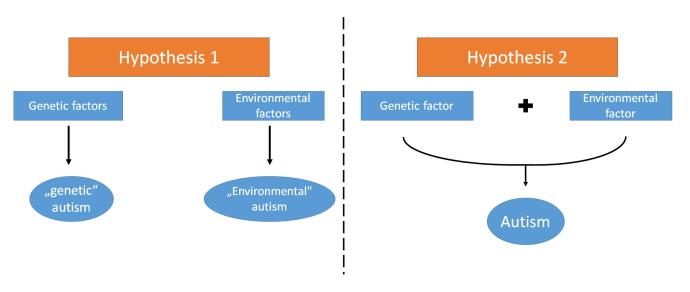General information
Childhood autism was for the first time diagnosed and its symptoms described in 1943. Usually autism is diagnosed within the first three years of life and is probably the most outstanding disease of a group of symptomatically related diseases. They are called “autism spectrum disorders” (ASD). ASD is mainly characterized by the occurrence of three symptoms: impairments in communication, social interaction and the occurrence of restricted repetitive behaviors and interests. Additionally, most individuals diagnosed with autism present intellectual and cognitive impairments.

Incidence rate
With one in 88 children being diagnosed with ASD it can be considered to be rather frequent. Analyzing its incidence rate over time, a review article claims a five till ten-fold increase of the rate of ASD diagnosis over the last 20 years. This increase of incidence might, however, also partially be due to confounding factors such as improved diagnostic techniques and a higher awareness for ASD.
Underlying actual factors leading to a higher incidence rate might be an increased exposure to environmental factors related to ASD. However, if environmental factors and which of them specifically are related to ASD is still under debate. A reason for this uncertainty is the rather complex nature of the disease, with genetic, environmental, immunological factors and oxidative stress being suggested to be involved.
Hypotheses on the origin of autism
Due to this complexity of autism, there are several hypotheses that try to provide an explanation for its etiology.
One hypothesis suggests that autism is a very heterogenic disease. Some cases of autism might be mainly caused by genetics, while other cases might mainly be the result of environmental factors.
Another hypothesis is that autism results from a combination of being genetically susceptible in addition to a specific environmental trigger, that then leads to developing the disease.
In conclusion, in both mentioned hypothesis, an environmental factor is at least in a proportion of the cases suspected to contribute to the onset of the disease.

Aim
In this study, I aim to:
- review the literature and identify plausible environmental risk factors for autism
- construct a questionnaire including as many of the identified factors as possible.
Responsible for this page:
Director of undergraduate studies Biology
Last updated:
05/30/17
